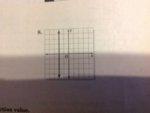You are using an out of date browser. It may not display this or other websites correctly.
You should upgrade or use an alternative browser.
You should upgrade or use an alternative browser.
The Official Homework Help Thread
- Thread starter Zandy
- Start date
ObeseMudkipz
In the Shadows
AGHHH I watched a bunch of videos and even asked my teacher for help and the exam is tomorrow /:. Can anyone explain how to write ionic formulas to me if I was on grade 1. So things like K3N, NaCl, etc
That Zephyr Guy
crouton.net
View attachment 163730
I need help solving for x, y, and z.
I don't know how many people here are into geometry/trig/Geometric Means, but this one problem is giving me lots of trouble. Any help would be great!
This looks like you have to use the pythagorean's theorem for the variables.
It also looks like its going to end with a system of equations. While you're putting them all into pythagoreans, try to keep them all to the same variable. Also, be prepared to factor things out.
View attachment 163730
I need help solving for x, y, and z.
I don't know how many people here are into geometry/trig/Geometric Means, but this one problem is giving me lots of trouble. Any help would be great!
u just need to construct a couple of equations and then solve them simultaneously. as there are three right angle triangles, so u can make three equations based on pythagoras
That Zephyr Guy
crouton.net
AGHHH I watched a bunch of videos and even asked my teacher for help and the exam is tomorrow /:. Can anyone explain how to write ionic formulas to me if I was on grade 1. So things like K3N, NaCl, etc
The magic number with most ionic formulas is the 8. (Otherwise it's an ion)
The metal comes first, and then the non-metal comes 2nd. Their valence electrons should always total to 8.
For example, NaCL. Is comprised of two elements (obviously). Sodium and Chlorine.
Sodium has one valence electrons because it's a group 1 element.
Chlorine has seven valence electrons because it's a group 7 element. (Halogen)
The big thing to remember is that eight is the magic number though.
ObeseMudkipz
In the Shadows
The magic number with most ionic formulas is the 8. (Otherwise it's an ion)
The metal comes first, and then the non-metal comes 2nd. Their valence electrons should always total to 8.
For example, NaCL. Is comprised of two elements (obviously). Sodium and Chlorine.
Sodium has one valence electrons because it's a group 1 element.
Chlorine has seven valence electrons because it's a group 7 element. (Halogen)
The big thing to remember is that eight is the magic number though.
Oh didn't know that but I was wondering how you get formulas like K3N, Li5P and other stuff like that
That Zephyr Guy
crouton.net
Oh didn't know that but I was wondering how you get formulas like K3N, Li5P and other stuff like that
K is a first row element, so it has 1 valence electron.
N is 3 rows from the end, so it has 3 open slots.
This means you need 3 K atoms to bind to a single N atom.
Li5P doesn't make much sense to me, but it's been a long time since I've taken chem.
why do we call 6 carbon glucose and citric acid whats the difference between glucose and citric acid's structure ????
cuz sugars (specifically monosaccarides) follow the general formula of CnH2nOn
the sugar where n = 6 is glucose
citric acid is a completely different thing, even tho it also has 6 carbons. the formula for sugar is C6H12O6, for citric acid it's C6H8O7, so from the atoms alone the two are different. even then, you can have compounds with the same formula but vastly different structure and function
citric acid:

glucose:

ObeseMudkipz
In the Shadows
Yea I was thinking that. I just used an example from my science test and I think my teacher made some updont think Li5P exists
cuz sugars (specifically monosaccarides) follow the general formula of CnH2nOn
the sugar where n = 6 is glucose
citric acid is a completely different thing, even tho it also has 6 carbons. the formula for sugar is C6H12O6, for citric acid it's C6H8O7, so from the atoms alone the two are different. even then, you can have compounds with the same formula but vastly different structure and function
citric acid:
glucose:
oh ok im taking ap chem next year so i was confused coz rn im just in a bio class and my teacher didnt really want to get into details about it. He just described them as having 6 carbon so I was really confused because I thought it was 6 carbon only
Mimi Cheems
you make me wanna make you fall in love ♡
So tomorrow I have a science test and it's over velocity and acceleration and all that other stuff...
I left my study guide at school and I don't remember any of it...
Can someone explain like the whole acceleration and velocity thing to me...? It makes no sense @______@
I left my study guide at school and I don't remember any of it...
Can someone explain like the whole acceleration and velocity thing to me...? It makes no sense @______@
So tomorrow I have a science test and it's over velocity and acceleration and all that other stuff...
I left my study guide at school and I don't remember any of it...
Can someone explain like the whole acceleration and velocity thing to me...? It makes no sense @______@
acceleration is the rate at which ur velocity changes
velocity is ur speed and direction
xD
Mega_Cabbage
Meh
So tomorrow I have a science test and it's over velocity and acceleration and all that other stuff...
I left my study guide at school and I don't remember any of it...
Can someone explain like the whole acceleration and velocity thing to me...? It makes no sense @______@
Well acceleration is the derivative of velocity, so if you find the slope of velocity, then you get your acceleration.
That Zephyr Guy
crouton.net
So tomorrow I have a science test and it's over velocity and acceleration and all that other stuff...
I left my study guide at school and I don't remember any of it...
Can someone explain like the whole acceleration and velocity thing to me...? It makes no sense @______@
Kinematics has 3 important concepts: Position, Velocity, and Acceleration.
Let's say we have all 3 of these things sloped for the same object that's in motion.
The slope of the position graph would be the Velocity. If the position graph is a horizontal line, then it has no slope, thus no Velocity, thus it is not moving.
If it is linear, then it has a Velocity, but that Velocity is constant because the slope is not changing.
If it is curved, the slope is changing as we move down the graph. This means that the Velocity is changing, which means the object is accelerating. (Acceleration is a change in velocity.)
Is your test on algebra based kinematics or calculus based kinematics? If it's algebra based, all you really need to know are your 3 equations. (Because in algebra based, the acceleration is always constant):

If it's calculus based, you need to know how to find the derivatives and integrals of position, velocity, and acceleration functions. If you need help with that specifically, lemme know and I can go more in depth about it.
Last edited:
Dawnpiplup
Kick ass.
Ok, so I need help on my Pre-Algebra homework. I kind of understand it, but not fully. It's about Linear Functions and Graphing. So my homework says:
Determine whether each relation is a function. Explain.
{(3, -8), (3, 2), (6, -1), (2, 2)}
I answered the problem like this: "No, because 3 is paired with 2 range values." I'm pretty sure that's right, but can someone verify if it is? Also, the problem above had two "2"s in the Y place (x, y). So if there are two or more same numbers in the Y place, will it then mean that it's not a function? Sorry if that didn't make sense .-.
Also, is this graph a function? And can someone explain why?
Determine whether each relation is a function. Explain.
{(3, -8), (3, 2), (6, -1), (2, 2)}
I answered the problem like this: "No, because 3 is paired with 2 range values." I'm pretty sure that's right, but can someone verify if it is? Also, the problem above had two "2"s in the Y place (x, y). So if there are two or more same numbers in the Y place, will it then mean that it's not a function? Sorry if that didn't make sense .-.
Also, is this graph a function? And can someone explain why?
Last edited:
no that graph is not a y function because it has an infinite number of y values
that also isn't even a y= line its actually an x= line which is not a function
- - - Post Merge - - -
and yes what you said was correct
- - - Post Merge - - -
the line is x=2 to be exact
that also isn't even a y= line its actually an x= line which is not a function
- - - Post Merge - - -
and yes what you said was correct
- - - Post Merge - - -
the line is x=2 to be exact
That Zephyr Guy
crouton.net
Ok, so I need help on my Pre-Algebra homework. I kind of understand it, but not fully. It's about Linear Functions and Graphing. So my homework says:
Determine whether each relation is a function. Explain.
{(3, -8), (3, 2), (6, -1), (2, 2)}
I answered the problem like this: "No, because 3 is paired with 2 range values." I'm pretty sure that's right, but can someone verify if it is? Also, the problem above had two "2"s in the Y place (x, y). So if there are two or more same numbers in the Y place, will it then mean that it's not a function? Sorry if that didn't make sense .-.
Also, is this graph a function? And can someone explain why?
A function is an expression that has 1 output for every input.
Let's keep this in mind as we go over your homework:
{(3, -8), (3, 2), (6, -1), (2, 2)}
You said: "No, because 3 is paired with 2 range values.", which is 100% correct. Good job.
"Also, the problem above had two "2"s in the Y place."
This is okay. This is two similar outputs, but you get them from different inputs. In each case, your input of 3x = 2y, and your input of 2x = 2y has a different input.
As for the graph, there's a test you can do to tell if it's a function at a glance. Place your pencil vertically on the paper, and if it touches 2 or more spots on the graph, it's not a function. (Because that would mean it has 2 or more outputs for a single input)
Last edited:
Similar threads
- Replies
- 0
- Views
- 154
- Replies
- 4
- Views
- 1K

